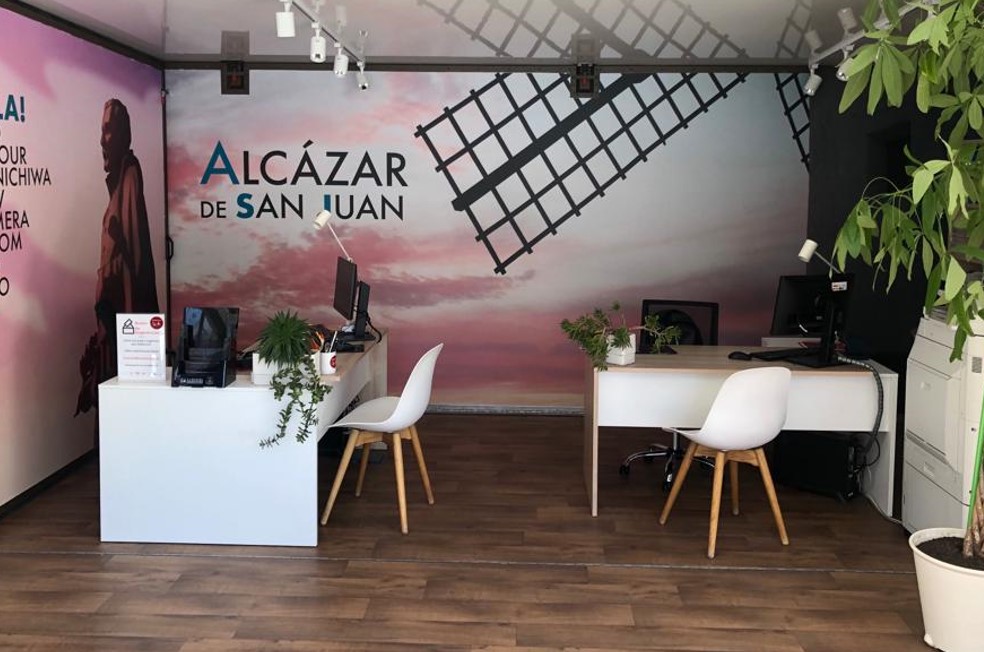Located in the middle of the La Mancha plain, the Gran Prior Canal is one of the most monumental and unknown hydraulic infrastructures of Castilla-La Mancha, the result of the modernizing attempts of the Enlightenment in Spain in the 18th century. Its layout was designed by the best architect of the kingdom, Juan de Villanueva, author of the building of the Prado Museum.
For millennia the upper basin of the Guadiana River has been an area characterized by the presence of flood plains that made the area unhealthy, plagued by ponds and mud flats.
Show more contentThe Roman historian Pliny the Elder described it as a place where the waters “spread out and advanced very slowly, among bulrushes, bulrushes and reeds, until they disappeared”. Since then, the human being has tried to domesticate and take advantage of the waters of the Guadiana River, building bridges, dams, mills and fulling mills. As early as the Middle Ages, significant work was begun to channel the waters of the river, which was completed in 1612 by the prior of the Order of St. John, Prince Manuel Filiberto of Savoy. The channeling of the river allowed the construction of four gunpowder mills near the current town of Alameda de Cervera, whose function was to feed the strategic saltpeter factory located in Alcázar de San Juan of which Tomás López in the XVIII century would say: “The saltpeter factory of this town is the most useful and best of the kingdom, as well as very old, since it already existed in the year 1518”. In spite of everything, the lack of water in Cervera to produce gunpowder and to irrigate the southern lands of the priory, led the Infante Don Gabriel de Borbón to propose a great reform of the Canal, giving this task to the best architect of the kingdom: Juan de Villanueva.
For this purpose, the architect visited the area in the summer of 1781, commissioned by the Grand Prior Gabriel de Borbón, in order to determine the cause of the lack of water in the Cervera powder mills and to propose solutions. He made a reconnaissance of the entire course of the Upper Guadiana as it passes through the Priorato, as well as the Lagunas de Ruidera. The architect’s proposal was to move the powder mills to the foot of the lagoons. As a result of this study, the Plan Geográfico de las Lagunas de Ruidera y curso que hacen sus aguas con el nombre de rio Guadiana (Geographic Plan of the Ruidera Lagoons and the course of the Guadiana River) was born, dated 1781.
In the following years, the machinery for the powder mills was moved from Cervera to Ruidera and at the same time bridges, irrigation ditches, locks and an impressive fulling mill were built. Thus, the Gran Prior Canal extended for more than 65 kilometers from its origin at the Miravete lock, at the foot of the Lagunas de Ruidera, to its mouth at the confluence of the Záncara and Gigüela rivers, about 5 kilometers upstream from the disappeared Buenavista Bridge, in the municipality of Alcázar de San Juan. From here it continued along the common course formed by the rivers Záncara, Gigüela and Guadiana to Villarta and Arenas de San Juan, leaving the territory of the Gran Priorato in the municipality of Villarrubia de los Ojos. In its route it crossed the towns of Argamasilla de Alba and Alameda de Cervera.
Today, although it has completely lost its use and most of its route has been cut off, some constructions linked to this great engineering work are still preserved. Many of them are concentrated in the municipality of Alcázar de San Juan, where, in addition to several bridges and locks, the remains of a gigantic fulling mill can be seen, whose sober but forceful lines are awe-inspiring to those who visit it.
Despite the undoubted historical, artistic and architectural value of this work, for decades it has remained in absolute oblivion, being gradually consumed by vegetation and agricultural work. His destiny has been linked to that of Juan de Villanueva himself, who despite being the greatest exponent of neoclassical architecture in Spain, has never received the recognition he deserved. However, the year 2021 seems to mark a turning point in this history, with the publication of the monumental work “Ruidera (1781-1785): genesis and construction of a royal gunpowder factory” and the beginning of the recovery works of part of the structures of the Canal in the municipality of Alcázar de San Juan. This opens up a promising future for a heritage that is as fascinating as it is unknown.






